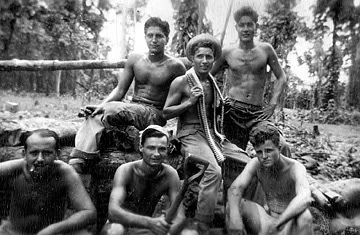






Assignment 3: Braceros and Zoot Suiters During the War Years
Today is a new day and have managed to put my brain back together again. I’m starting to wonder if any Mexican-Americans were in Hayward during WWII (I’m sure there were).
Some major historical undertones during this era for Mexican Americans were the war, the Bracero Program, and the “Zoot Suit Riots.” I will let you and only you in, on what is the Bracero Program and the Zoot Suit Riots.
Many people opted for work in major industrial cities like Los Angeles or Oakland during the WWII. Others joined the war. This left a void in the agricultural work pool. In response to this labor shortage, the governments of the U.S. and Mexico came up with the Bracero Program, a Mexican guest worker program. This was a sharp contrast to the Mexican repatriations that occurred during the 1930s, when many Mexicans were forced back to their country in order to secure jobs for “real Americans.”
This Bracero Program was an agreement that allowed for the recruitment of Mexican males to come to this country and work in its agricultural fields. It is estimated by historian Manuel G. Gonzales that quarter of a million Mexican nationals were employed as Braceros between 1942-1947. Officially the program was supposed to end in 1947, but due to the fat cats of the Agricultural industries, mainly from the West, the program ran through December 1964. Contracts issued by Growers were supposed to insure the rights of all the guest workers but abuses did occur. Most Braceros were destined for agricultural work. But some went to the railroads for grueling physical duties. “By August 1945, 67,704 were working on railroads,” wrote author Rodolfo Acuna.
Many came and many stayed. Jose Cruz was one that stayed and made a life for himself in the East Bay. Courtesy of the Latino History Project from the Oakland Museum, Mr. Cruz was born in Mexico City in 1924 and came to this country as a bracero worker.
If you were a Mexican during the war years, you faced tough times especially in Los Angeles. Violence erupted in some American cities in 1943, with most of it in the City of Angels; this episode became dubbed “The Zoot Suit Riots” of 1943. Sailors and marines in Southern California were on the prowl for Chicano youths, who were dressed in their finely tailored zoot suit ensembles, in order to issue a whooping for wearing this type of clothing. For days Anti-Mexican hysteria was sensationalized by the media. In June 1943, it came to a boil in Los Angeles. There was chaos was in the streets of this city without any help in sight. Eventually the National Guard became involved in order to stop the riots but the emotional scar on the mindset of Latinos had already been set into place.
Bibliography
http://www.pbs.org/wgbh/amex/zoot/
http://museumca.org/LHP/index.html
http://braceroarchive.org/
http://3.media.tumblr.com/tumblr_kucg3c3b091qa2j8co2_500.jpg
http://www.findingdulcinea.com/docroot/dulcinea/fd_images/news/on-this-day/May-June-08/On-this-Day--Zoot-Suit-Riots-Begin-in-Los-Angeles/news/0/image.jpg
http://la.curbed.com/uploads/2008-04-zoot_suit_riots.jpg
http://museumca.org/LHP/jose/pages/2000.35.5.htm
Acuna, Rodolfo. Occupied American: A History of Chicanos. New York: Harper Collins. Publishers, 1988.
Gonzales, Manuel G. Mexicanos: A History of Mexicans in the United States. Indiana: Indiana University Press, 2009.
McWilliams, Carey. North from Mexico: The Spanish-Speaking People of the United States. New York: Monthly Review Press, 1961.


No comments:
Post a Comment